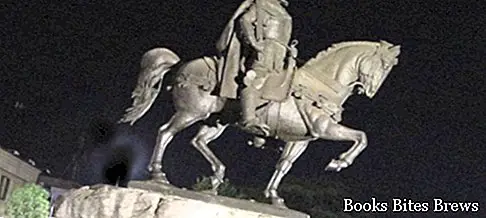What to see in Tirana, itinerary including the main monuments and places of interest, including Scanderbeg Square, Ethem Bey Mosque and National Historical Museum.
Tourist information
Capital of Albania, Tirana is located in a valley at the base of Mount Dajtit, on the banks of the Lana River.
It was founded in the early seventeenth century by the Turkish general Sulaimān Pascià, on a first residential nucleus that dates back to the Roman and Byzantine periods.
The eastern aspect, which characterized the city originally, has faded over time, except for the ancient core, which has instead preserved some interesting traces.
The main attraction of the city center is the Scanderbeg Square, dedicated to the Albanian national hero Giorgio Castriota Scanderbeg, whose equestrian statue dominates the square.
This square stands out in particular for its large size.
Located in the heart of Tirana, it is a palpable reminder of the communist era, when such a large size served, as well as for the army parades, to demonstrate the power of the regime.
What see
Around the square stand out the Ethem Bey mosque, 1789-1823, small, with the Clock Tower, 1821-22, symbol of the city, alongside it, and the National Historical Museum, which tells the history of Albania from prehistory to the present day.
The construction of the Ethem Bey Mosque began in 1789 and was completed in 1823.
In the period of the communist dictatorship it was closed.
It was reopened in 1991 by a few thousand people who, courageously, regardless of the opposition of the authorities, entered it to pray and the police did not object.
Recommended readings- Tirana (Albania): what to see in the capital
- Saranda (Albania): what to see in the white city
- Durres (Albania): what to see
- Butrint (Albania): what to see in the archaeological park
- Albania: useful information
This event marked the beginning of a revival of religious freedom in Albania.
Very interesting are the frescoes located in the porch, which have some peculiarities in the designed motifs, in fact trees, waterfalls and bridges are depicted, subjects rarely present in Islamic architecture.
This shows that these works were made by non-Muslim workers, probably by Venetians.
The National Historical Museum, designed by the Albanian architect Enver Faja and open to the public on October 28, 1981, is the largest museum in the nation.
For its construction, the former Tirana Town Hall was demolished.
The grandiose mosaic at the main entrance, made by various contemporary artists and entitled "the Albanians", depicts the Albanian people in history.
The exhibition rooms include several sections, including antiquity, feudal Middle Ages, Albanian culture and Arberian diaspora.
There is no lack of spaces dedicated to the national romantic revival, to the Albanian participation in the Spanish Revolution of 1936, to the partisan resistance to Nazi-fascism in the Second World War and to the period of communism.
To visit the areas related to philatelic history, Mother Teresa and the visit of John Paul II to Albania.




